Like Peter Parker’s Uncle Ben, Peter’s love interest Gwen Stacy is famously one of the few truly dead characters in the mainline Marvel Comics continuity. She’s had brief returns as a clone, but even what-if series like Spider-Man: Life Story were hesitant to let her assert any degree of independence. Jason Latour and Robbi Rodriguez’s Spider-Gwen is the first story in ages to let Gwen Stacy be her own person again. Born out of the Spider-Verse crossover event, their series broke several Marvel conventions, allowing Gwen and her supporting cast to, unlike many comic book characters, actually grow and change in substantial ways.
The inherent rule of thumb with Spider-Gwen is that, if something has been done to death, it will break the cycle and explore a new angle. Gwen Stacy of Earth-65 isn’t simply “a nice girl” but a compelling, self-actualized woman making a life as a drummer in a band. Though Gwen is transformed by a mutated spider like her mainstream counterpart, the parallels stop there. She actually saves her father’s life, but in her first months as a hero, she has a hand in the death of her best friend, Peter Parker.
Though it’s only shown in flashbacks, her world’s Peter is inspired by Gwen’s displays as Spider-Woman, transforming himself into the Lizard to reap vengeance upon his high school tormentors. It’s a rather Carrie-esque turn for Peter and a moment of weakness that costs him everything. Gwen doesn’t realize who he is until it’s too late, and her offensive against the Lizard ends in the chemicals backfiring on Peter. Moments later, he dies in her arms, and a warrant is out for Spider-Woman’s arrest.
Where Peter on Earth-616 learns the value of responsibility through his inaction costing his uncle’s life, Gwen’s hands are stained with the blood of her friend due to her own glee at dishing out pain. It’s a powerful lesson more fitting for today’s issues of how those with power use it carelessly. Gwen takes the tragedy to heart, and it molds her into a darker yet more empathetic heroine for New York City. She’s not brooding off every rooftop like Batman, but she isn’t like a teenage Peter Parker either.
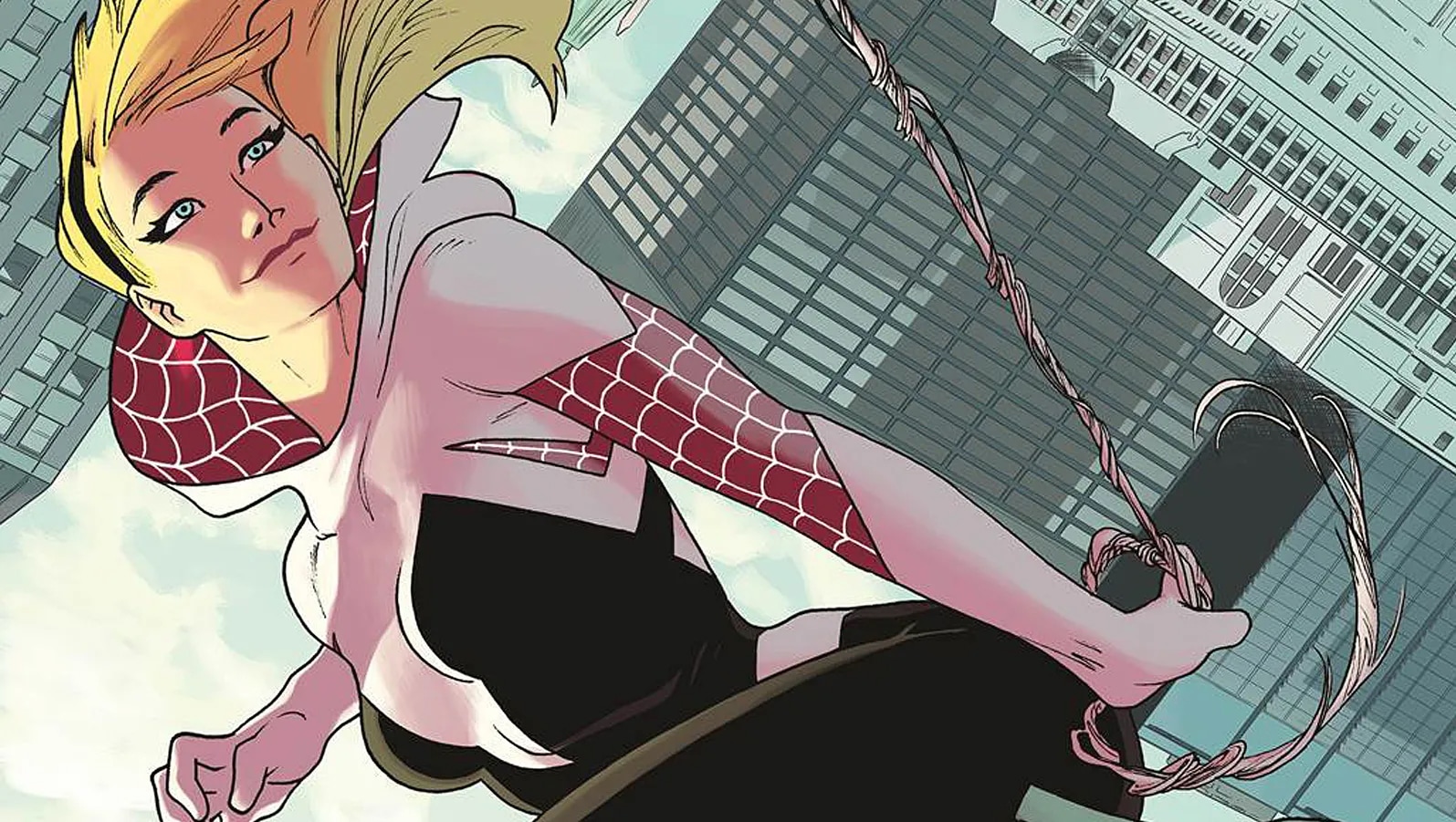
Where many comics would leave Gwen’s secret identity a looming mystery for her father to piece apart, Captain George Stacy of the NYPD learns her true identity in the first issue. George is as trapped as Gwen amid the investigation as he tries to advise his only daughter while striving to prove her innocence. He’s the same supportive, just man from the mainline continuity, challenged in refreshing ways by the ever tightening web threatening to ensnare his daughter.
The whole Spider-Gwen cast boasts this revitalizing energy. Frank Castle’s family may be alive and well, but his hardened ex-military exterior costs him his marriage, leading him to be intensely devoted to upholding the law. Norman Osborn is a kinder, gentler man who strives to help his son after Harry becomes embittered over Peter’s death. Matt Murdock is easily the most unsettling remix of the cast, standing as the new Kingpin of Crime while displaying an inherent atheistic nihilism to the world that merges with his traditional origins to present a chilling figure brimming with malice.
All of this is bolstered by real consequences — Spider-Gwen being set in its own continuity means every plot twist and new wrinkle sticks. That’s great because Gwen often makes impactful good and bad decisions, as do those around her. If loved ones or enemies learn Gwen’s identity, Gwen has to roll with that. Likewise, being in a band and having a cop for a father push her into unique scenarios. Her biggest concerns aren’t even supervillains — her most persistent enemy is a trust-fund idiot with too much time on his hands called the Bodega Bandit.
At various turns, SHIELD is both a threat and help. Earth-65’s Captain America Samantha Wilson is one of her few allies, and like George, attempting to follow the rule of law leaves her conflicted. The creators of the spider that gave Gwen her power come back to claim the power with a vengeance. And when Gwen loses her powers, they’re gone, and her only resort is to be stuck under Murdock’s thumb. Each step in the journey tests Gwen and those around her. George, Murdock, and even Uncle Ben go through an emotional arc.
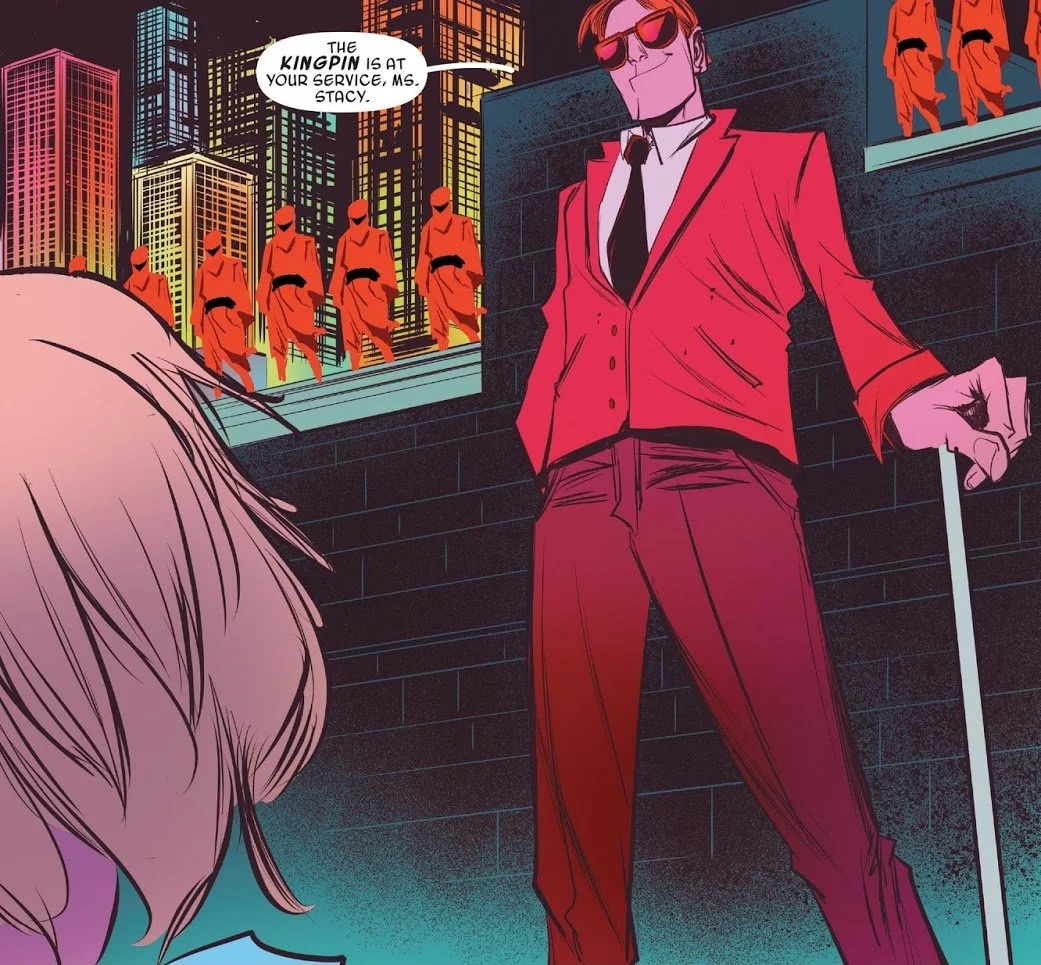
Spider-Gwen never becomes overly dour, despite the heavier subject matter, and it can accept some comic book-y nonsense. Gwen seeks out her universe’s Reed Richards intentionally because she knows her world must have one after all the Spider-Verse shenanigans. She’s immensely humbled to learn she’s one of the few Gwen Stacies of the multiverse that lives past being a teenager.
Granted, some of Gwen’s later story beats can be harder to follow since they occur in Spider-Women or Spider-Man/Spider-Gwen: Sitting in a Tree. The mainline series tends to explain those new developments swiftly, but it’s still not ideal. If nothing else, the inherent self-awareness means that Earth-65’s world-building feels like an entire universe that’s existed for years. Instead of wasting time explaining redundant information, we learn about what makes Earth-65’s residents fascinating. There’s an immense cast of characters drawn upon, from both Spider-Man’s mythos and the greater Marvel Universe, with a particularly surprising use of certain famous X-Men.
Yet none is a more welcome shake-up in Spider-Gwen than how the comic addresses its own symbiote arc. “Gwenom” was heralded as this ominous creature in advertising. After being pushed to the end of her rope, encompassed by the entity that drove Peter Parker to the edge of villainy when first introduced decades ago on Earth-616, what could possibly happen?! Well… the symbiote actually behaves itself, ironically enough.
Though it enables Gwen’s darker impulses at first, the journey the symbiote takes her on leads to a healthier state of being. It serves as the perfect opposite to what befell Peter, made all the more poignant by his failed lizard venom being key to the symbiote’s creation. Rather than turning Gwen into a monster, it helps her achieve more in her life. Readers couldn’t be more stoked about what lay in store next for Gwen, who would go on to be one of the few heroes to retain her standalone universe after Marvel condensed its multiverse through the Secret Wars crossover event.
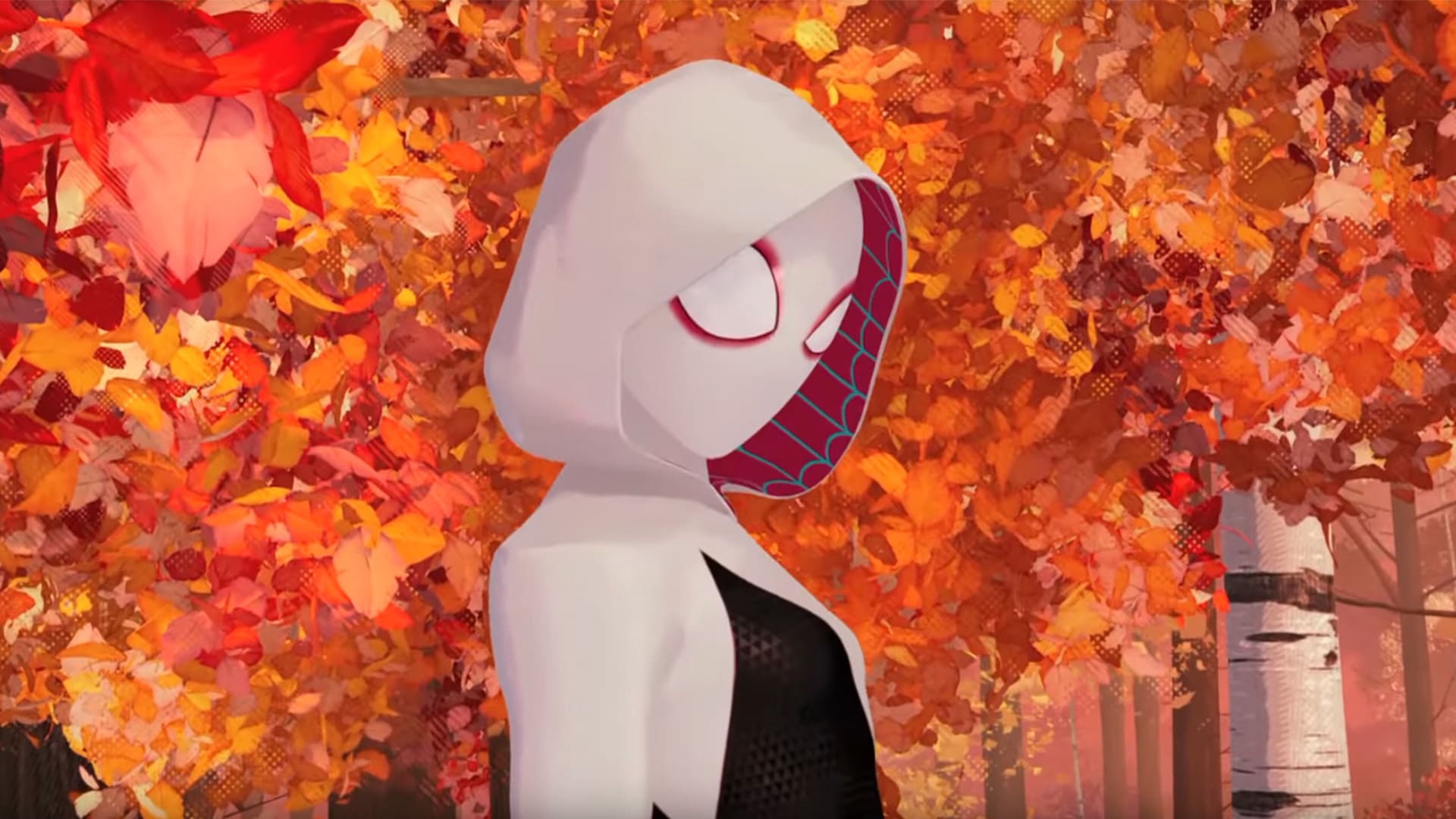
And then multiple harassment and misconduct allegations came out for both Jason Latour and Robbi Rodriguez. Yeah, that… definitely took the wind out of everyone’s sails for a minute. Following these allegations, a new creative team with Seanan McGuire, Takeshi Miyazawa, and Rosi Kampe has taken the helm. Now with the new title Spider-Gwen: Ghost-Spider, the series has remarkably redefined itself again. Though the new storyline is exploring Gwen going to college in the main Marvel universe, she still battles villains in her home dimension. Also Gwen’s portrayal in Spider-Man: Into the Spider-Verse has obviously sent her popularity skyrocketing. She’s since been in TV projects and is lined up for two subsequent Spider-Verse films.
When you take it all in, it’s easy to see why. Not only have both of the comic’s runs been cast in the glow of gorgeous, flowing art, but its compelling mix of drama and heartfelt dialogue keeps you coming back for more. Even Gwen’s suit is a striking contrast to past designs, with its stark black and white base cutting a distinct image regardless of background. Credit must also be given to both series’ colorist Rico Renzi, whose palette choices make every scene pop with life. Such an arresting new character is rare in a multiverse of icons, making it all the more fitting she launched alongside the likes of Kamala Khan as Ms. Marvel. With no signs of stopping, there’s never been a better time to delve into one of Marvel’s greatest reinventions.
Now if only they could figure out a better codename for her than “Ghost-Spider”…

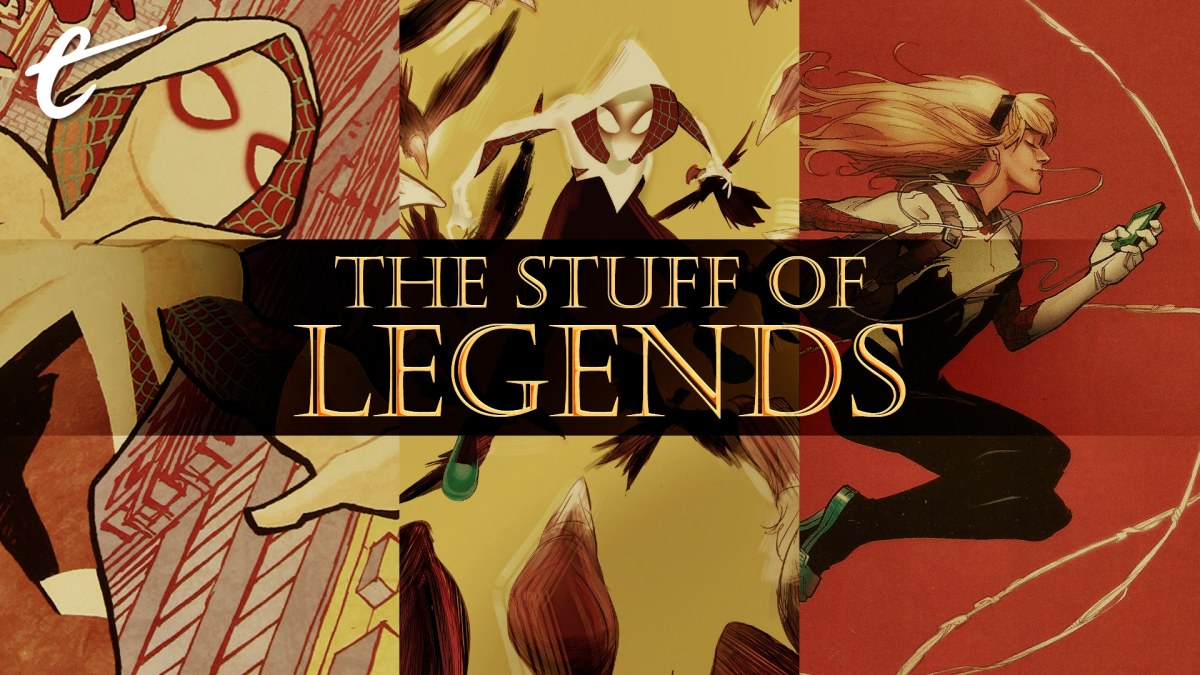





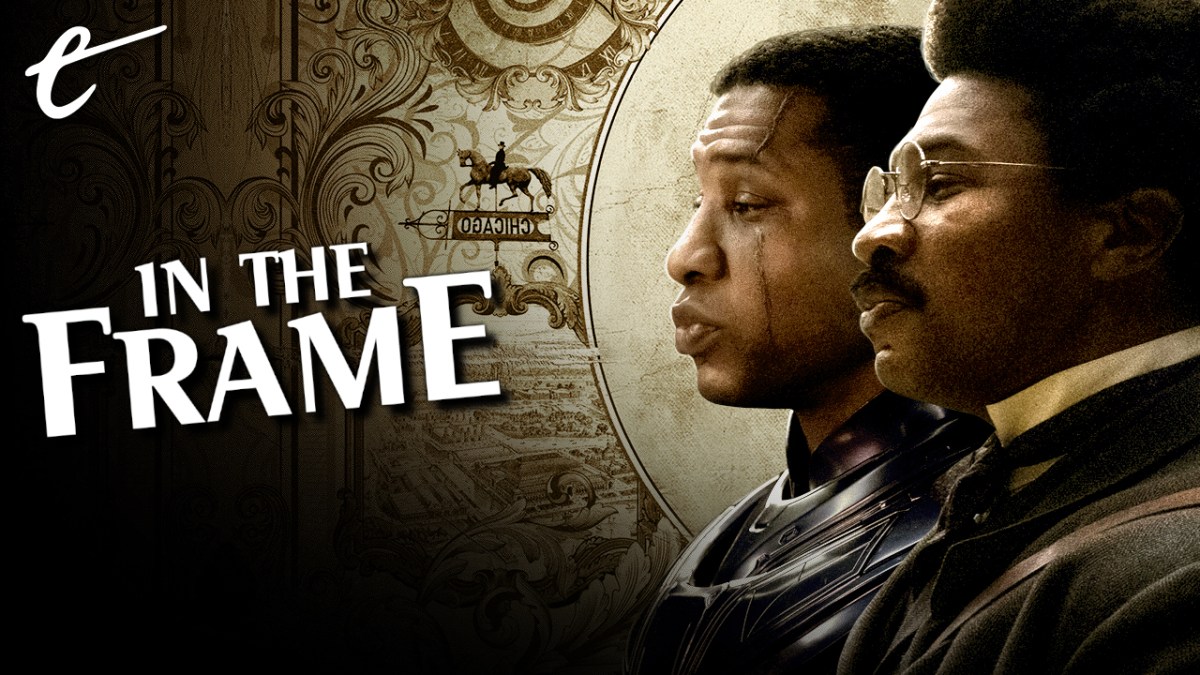


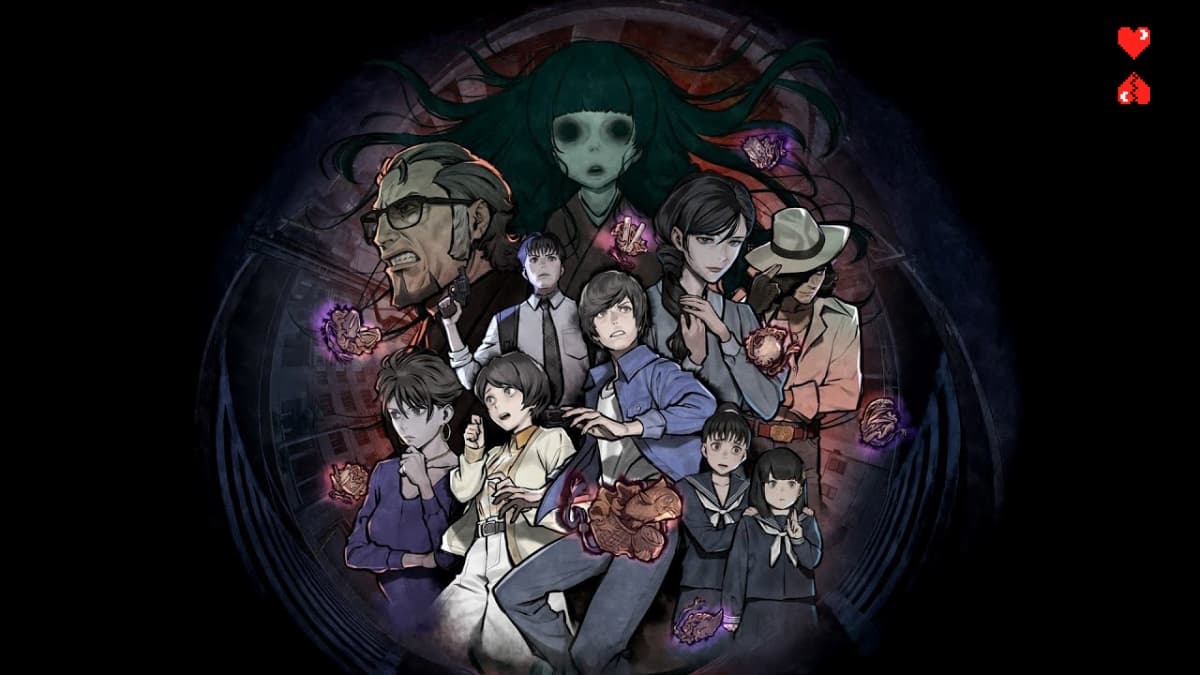
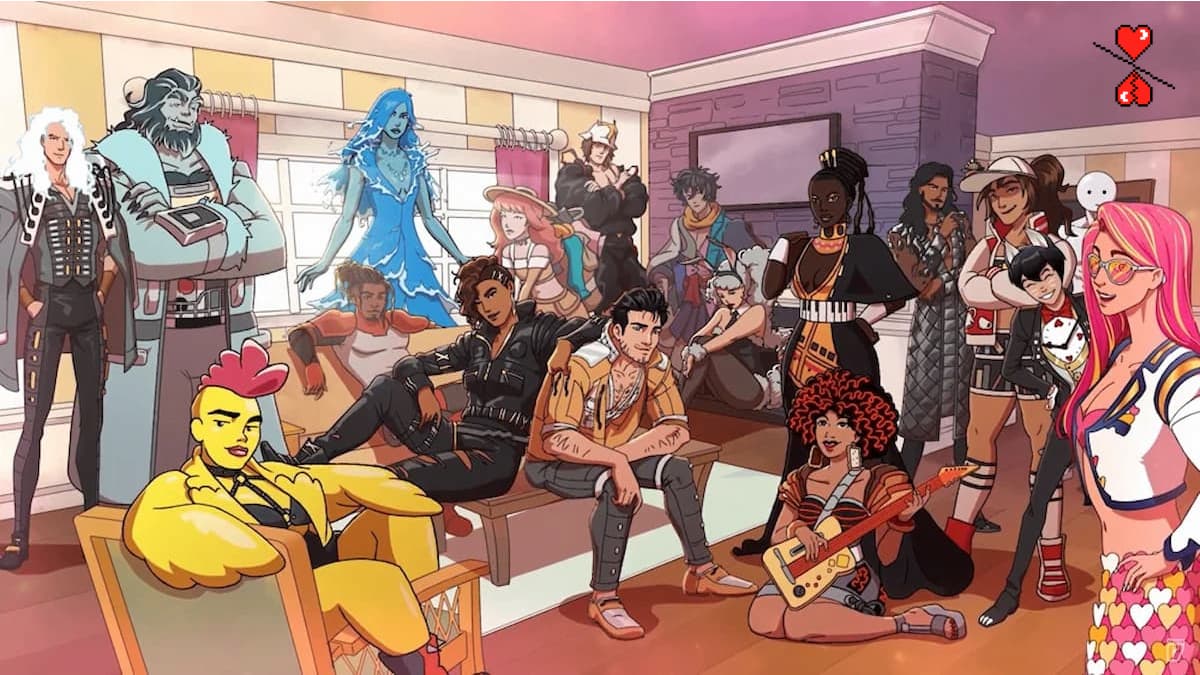


Published: Jul 24, 2021 3:00 PM UTC